Things are not exactly going to plan for Moscow in the Arctic – an area that is a strategic military region for Russia and has significant economic potential that could help Russia in propping up its war economy.
Yet, a combination of Ukrainian military capabilities, western pushback and the pressure of international sanctions have put a dent into Russian hopes to use the Arctic to its advantage in the war against Ukraine.
As tensions with the west rapidly grew in the wake of Russia’s annexation of Crimea in 2014, Russia significantly expanded the number of its military facilities in the Arctic.
Russia’s substantial and sustained investment into building up a military advantage means that it now has more airbases, ground forces and ships in the region than at any time since the collapse of the Soviet Union.
This article is the opinion of the author and not necessarily that of the UK Defence Journal. If you would like to submit your own article on this topic or any other, please see our submission guidelines.
This includes the powerful northern fleet, which is home to the majority of Russia’s nuclear submarine strike force.
This investment in military capabilities and infrastructure initially paid off in the war against Ukraine as Russia was able to bring its Arctic airbases into use. Early in the war bombers were moved further away from Ukraine and into the relative safety of the high north.
Yet, at the end of July 2024, Ukrainian drones attacked the Olenya airbase south of Murmansk. This was believed to be in retaliation for bombers based there being involved in the strike on a children’s hospital in Kyiv on July 8, 2024. With more long-range Ukrainian drones, the apparent advantage of Russia’s Arctic bases, if not gone, has at least been significantly diminished.
The west has pushed back militarily against Russia’s Arctic ambitions as well. Within days of the beginning of Moscow’s war against Ukraine in February 2022, the seven western members of the Arctic Council (Canada, Denmark, Finland, Iceland, Norway, Sweden, and the United States) issued a joint statement suspending all cooperation with Russia. This marked a radical shift away from working with Moscow, including on scientific projects related to issues of climate change, and is unlikely to change anytime soon.
Russia has not left the Arctic Council yet, but has re-focussed its Arctic strategy, including its broader foreign policy, on national interests. But the extent to which the Kremlin can pursue these successfully remains to be tested.
Within weeks of Finland joining Nato, the alliance held manoeuvres in the Arctic signalling its commitment to Article 5 (collective defence). A year later, after Sweden had joined the alliance as well, Exercise Steadfast Defender – the largest military manoeuvres since the end of the cold war – began in northern Norway. This was another signal to Russia that the Arctic was back on the western geopolitical radar.
It will, however, take some time for other nations to catch up with Russia in military terms. The fact that the US refreshed its Arctic strategy in July 2024 is an important step in this direction. By contrast, Nato, despite recognising the need for an increase in western force and capability projection into the region, still lacks a proper plan for the Arctic, as well as sufficient forces and military equipment capable of operating there.
Moreover, closer Russia-China military cooperation, including naval drills and joint air patrols add to the importance of the Arctic in the geopolitical chess games that have been developing over the past decade. And they indicate that Russia is unlikely to let go of what it sees as a military advantage.
Another important dimension to Russian calculations in the Arctic is that investment was never just a military endeavour. Moscow has poured resources into the development of economic infrastructure, particularly to enable year-long shipping from Asia to Europe using routes through the Arctic, thus providing the Kremlin with additional leverage and potential revenue.
Moscow’s claims to large areas of the Arctic shelf were recently recognised by the Commission on the Limits of the Continental Shelf – a body established to facilitate the implementation of the 1958 United Nations Convention on the Law of the Sea. So, Russia has access to vast natural resources there, in addition to those located in the approximate one-fifth of Russia’s land mass that lies beyond the Arctic Circle.
But this economic advantage is less than meets the eye. For example, even where Russia may have reaped financial benefits from Arctic resources – such as with its flagship LNG 2 project, opened by Vladimir Putin in July 2023 – the west has found ways to foil Russian efforts.
Western sanctions have had a measurable impact, forcing French, German and Japanese investors in the project to scale down their involvement. This created an opening for Chinese companies willing to circumvent US and EU sanctions, but, again, put Russian dependence on China, and especially Chinese investment, in the Arctic on full display. After all, Beijing’s Polar Silk Route is a strategy designed to produce economic advantages for China, not Russia, in the Arctic.
Russia may have acquired more ships to transport gas produced at its two main LNG facilities in the Arctic, but lack of insurance and western sanctions targeting buyers of Russian LNG continue to be a problem. So much so, that in early September 2024, the Financial Times reported that Russia was struggling to find buyers for the LNG produced by its flagship LNG 2 project.
Combined with little if any progress on finalising a deal on the Power of Siberia 2 pipeline project, hopes that the Kremlin might have had to replace formerly lucrative export deals to Europe look far from being realised.
The time when Russia held an advantage in the Arctic, partly due to western neglect, is coming to an end. The west now knows it must, and can, push back against Russia.
It may have been slow in coming, but the western response in the Arctic arena to Russia’s aggression against Ukraine may yet shape up into one of, so far, few success stories of effective containment. When it does, Russia’s expectations of using the Arctic advantage in the war against Ukraine could turn out to have been a costly miscalculation.![]()
Stefan Wolff, Professor of International Security, University of Birmingham. This article is republished from The Conversation under a Creative Commons license. Read the original article.


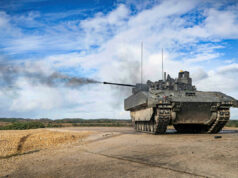
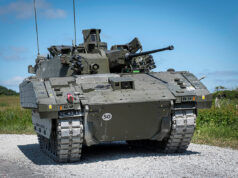


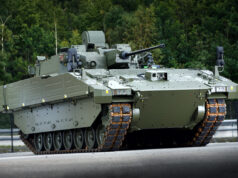
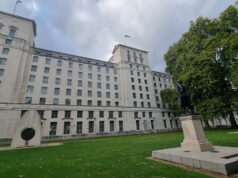
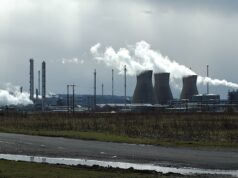




I had not heard of the attack by UKR drones on Olenya airbase, Murmansk. That is over 2,500km from Kyiv. Impressive!
Profoundly impressive, when you consider not long ago a 5000km round trip strike would have been the province of strategic bombers, naval forces or fighters with serious tanker support.
It’s quite clear that we are in a second cold war and have been for some time but we are only fighting it in limited areas giving Russia a chance to win. This just encourages Putin to carry on his war in Ukraine damaging both Uranians and Russians.
Western politicians need to increase defense spending so that Putin knows the game is up and he can not win.
It is Europeans who will lose, China will take that space and will gain , West is pushing Russia in that direction All what China is gaining is due to the blunder the western nations are making to make Americans happy. What China needs is infrastructure they getting it with Russian help, what they have is money.